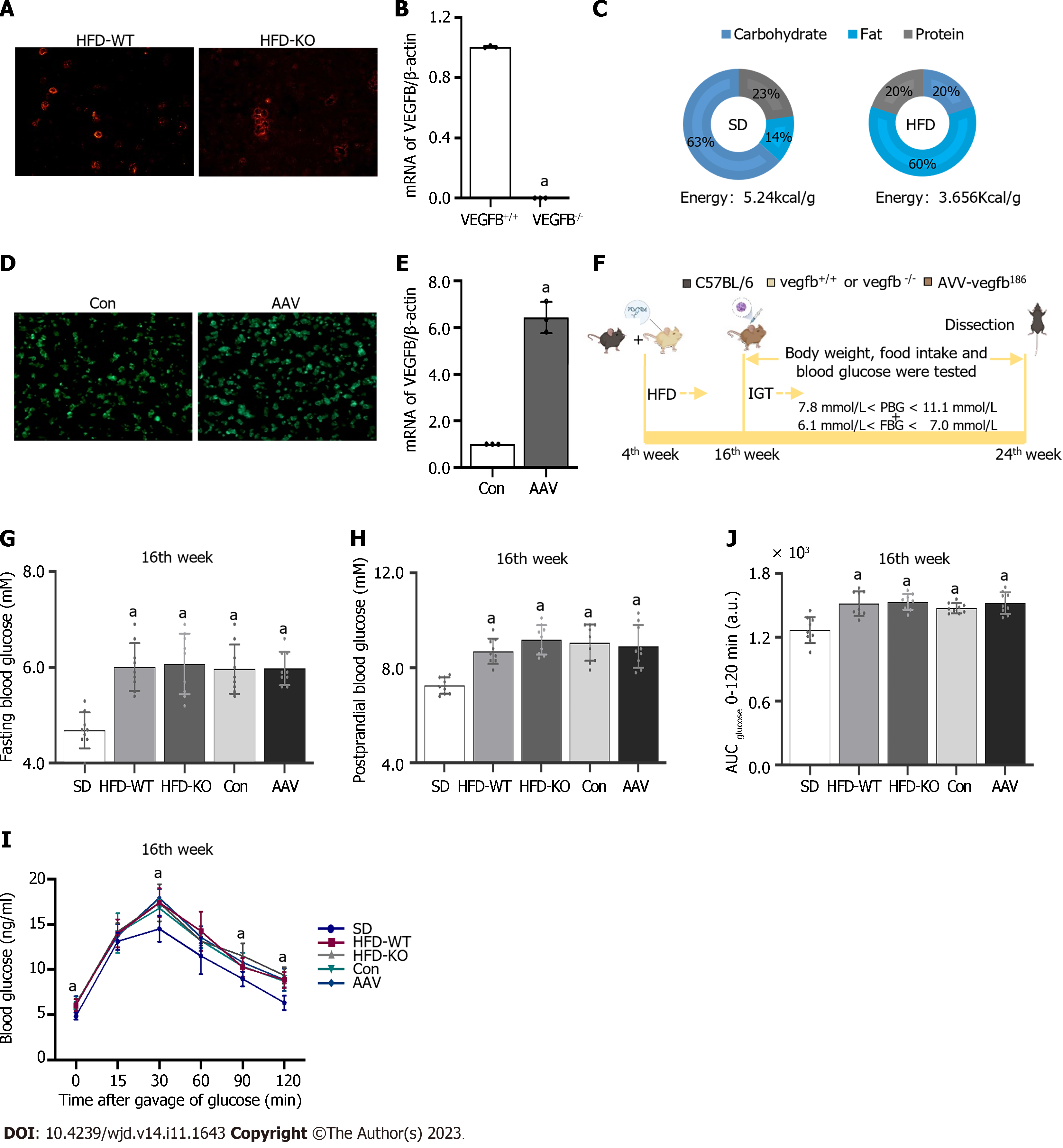Copyright
©The Author(s) 2023.
World J Diabetes. Nov 15, 2023; 14(11): 1643-1658
Published online Nov 15, 2023. doi: 10.4239/wjd.v14.i11.1643
Published online Nov 15, 2023. doi: 10.4239/wjd.v14.i11.1643
Figure 1 The construction of impaired glucose tolerance mice with vascular endothelial growth factor B gene knockout and overexpressed.
A: Active Stain of the islet cell mass in high-fat diet (HFD)-WT and HFD-KO mice; B: The mRNA expression of vascular endothelial growth factor B (VEGFB) in the islet of mice in the HFD-WT and HFD-KO group; C: The ingredients of standard diet (SD) and HFD; D: Green fluorescence staining of the islet with adeno-associated virus (AAV) infection in Con and AAV mice; E: The mRNA expression of VEGFB in the islet of mice in the Con and AAV group; F: The flow chart of animal experiments; G: Fasting blood glucose at the 16th wk; H: PBG at the 16th wk; I: Oral glucose tolerance test at the 16th wk; J: Area under the curve at the 16th wk. aP < 0.05 vs vegfb+/+; aP < 0.05 vs Con; aP < 0.05 vs SD. HFD: High-fat diet; AAV: Adeno-associated virus; SD: Standard diet; VEGF: Vascular endothelial growth factor.
- Citation: Li YQ, Zhang LY, Zhao YC, Xu F, Hu ZY, Wu QH, Li WH, Li YN. Vascular endothelial growth factor B improves impaired glucose tolerance through insulin-mediated inhibition of glucagon secretion. World J Diabetes 2023; 14(11): 1643-1658
- URL: https://www.wjgnet.com/1948-9358/full/v14/i11/1643.htm
- DOI: https://dx.doi.org/10.4239/wjd.v14.i11.1643









